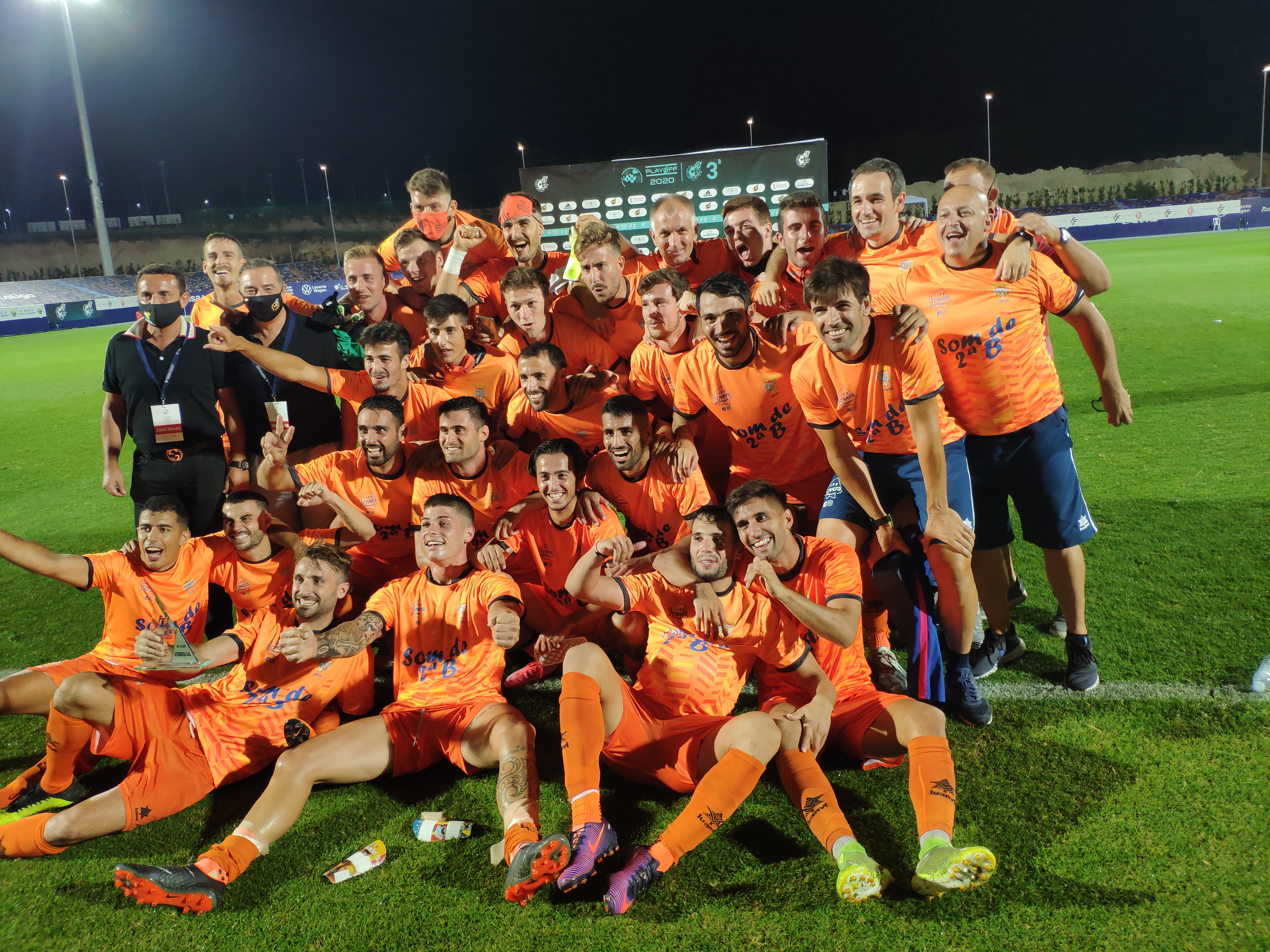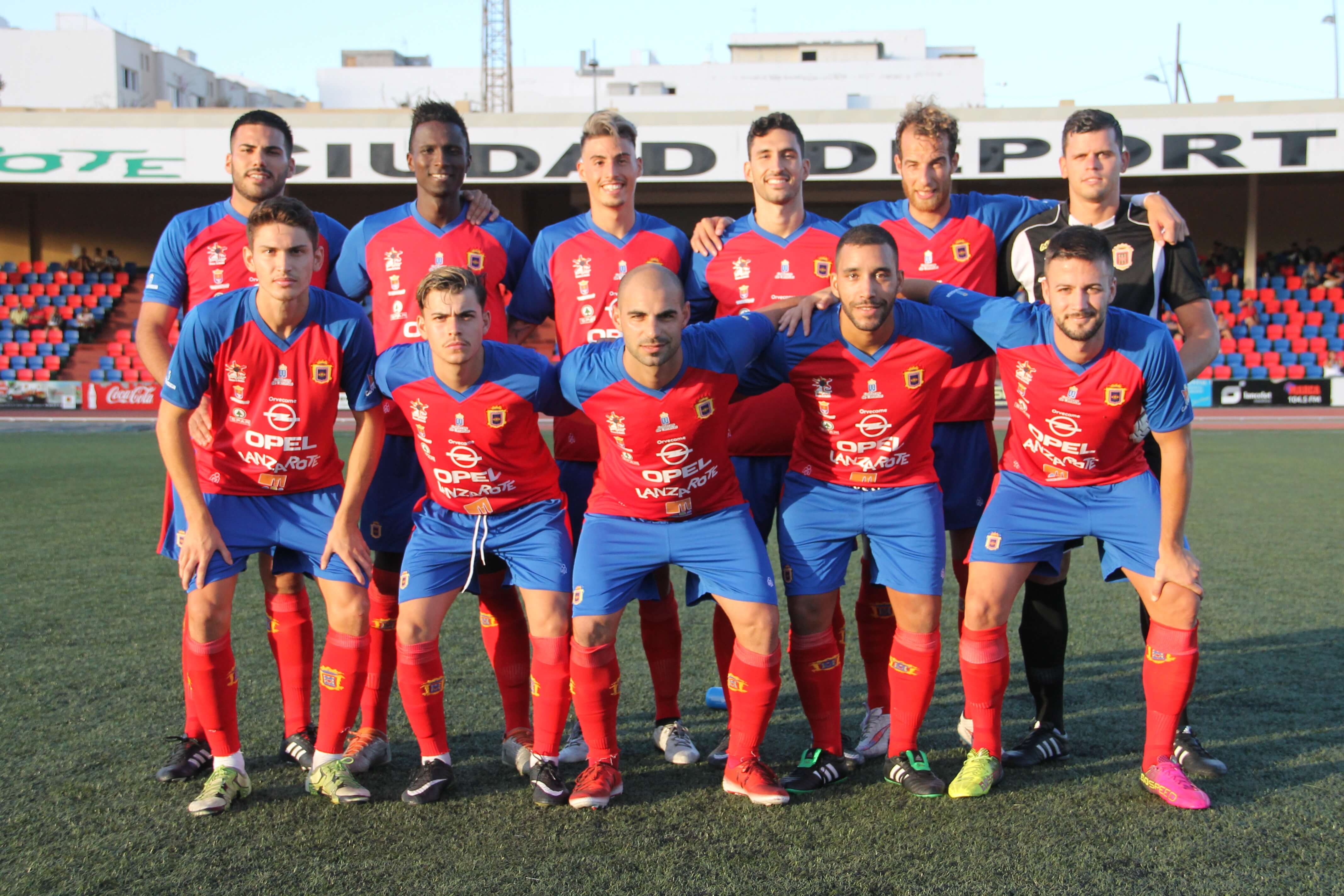Why do teams use the colors for their kits that they use?
The majority of football clubs have a distinct color, which they might use in their logo, shirt, or stadium. Think of how Barcelona uses the characteristic combination of dark red and dark blue, how everyone would associate yellow with Villarreal, Las Palmas, or Cádiz, or how Rayo Vallecano is known for its red stripe. The choice for a certain color or a combination of colors can be based on many arguments, the most frequent one being the flag of the city, province, or region of the club. However, there exist some interesting stories about the origin of the colors of a club. Let’s take a look at the most exciting ones in the lower leagues of Spanish football. This is…Curious Colors: part I.

Atlètic Balears
Atlètic Balears is known for its white and blue stripes, a tradition that goes back to 1920. This year, the club was founded after the merger of Mecànic FC and Mallorca FC. The new team promised to use elements from both its predecessors in its kit and did so. First, Atlètic Balears used the white-blue shirt of Mecànic, which was based on the logo of Isleña Marítima, the ferry company for which the founders of Mecànic worked. Moreover, Mecànic used to wear blue shorts, obtained after cutting their blue overalls. However, Atlètic Balears would use the shorts and socks of Mallorca, which were both white – and no one knows why. In short, the colors of Atlètic Balears trace back to the club’s working-class origin.

Atzeneta
For most of its history, Atzeneta played in a full white kit: simple and cheap. However, this changed in 2014 when the Valencian club adopted an orange kit. The reason for the choice of orange is obvious: the Valencian Community is known for its oranges. This also goes for the village of Atzeneta d’Albaida, which is surrounded by an orchard with many orange trees. After the kit change, the atzenetins achieved their most prestigious achievements, among which promotion to the Segunda B, becoming Spain’s strongest orange team.

Lanzarote
Lanzarote is another club that has based its colors on something they’re known for. For some, the Canarian island might be known for being a popular tourist destination, but the locals would be prouder of the nature of the island. Lanzarote was created by a volcanic hotspot in Earth’s crust and is made out of lava. Moreover, César Manrique, a local artist and politician, implemented volcanic rock in the street image of Lanzarote, strengthening the island’s links with lava. UD Lanzarote’s kit refers to the island’s nature: the red shirt represents the lava, and the blue shorts stand for the Atlantic Ocean.

Leioa
Leioa has another story. Its shirt consists of blue and red stripes a la barcelonesa, because the founding directives admired the Catalan club. In the 1950s, Leioa ceased all its activities, which were only restarted in 1974. The people who reorganized their beloved SD Leioa sent a letter to FC Barcelona in which they asked for a set of kits, as they themselves did not have the money to finance this. Barcelona’s board of directors sent a letter back, as well as dozens of shirts, shorts, and socks. For this reason, Leioa has been able to maintain the colors it has used since 1925.

L’Hospitalet
CE L’Hospitalet has a different shirt design than most clubs: a white shirt with a red stripe, similar to Rayo Vallecano. However, the Catalan club has a very different reason to use such a kit than the Madrilean team. L’Hospitalet was created in 1957 by the fusion of three clubs from the city of l’Hospitalet de Llobregat: UD Hospitalet, CD Santa Eulàlia, and CF Hèrcules. As for the kit of the newly born squad, the founding members decided to include elements from the equipments of each one of the three clubs: the white background of Hospitalet, the red of Santa Eulàlia, and the diagonal stripe of Hèrcules.

River Ebro
CA River Ebro is a club from Rincón de Soto, La Rioja, and was created in 1952. The team is a tribute to, on the one hand, CA River Plate, one of the strongest teams in South America and a very popular squad in the 1950s, and, on the other hand, the Ebro, the river that flows close to the Riojan village. The founders wanted to extend the tribute to River Plate to the club’s colors and decided on a shirt with red and white stripes: the same colors as the Argentinian team, but a different design.

San Roque de Lepe
In August 1956, the Festive Days of La Bella were celebrated in Lepe, Andalusia. The annual tradition attracted many people, who witnessed a new addition to the celebrations: a game of football, a sport that had become very popular in Lepe. The town’s principal team, San Roque de Acción Católica, wanted to play a match against Gibraleón but couldn’t due to the lack of a kit. After asking around, the football team heard that a man who worked at the bumper car track had some full yellow-black kits of Iberia SC, one of the predecessors of Real Zaragoza. San Roque made a deal with the man: they received the kits, and the man was allowed to participate in the friendly. Some months later, CD San Roque de Lepe (the current club) was founded and stuck with the yellow and black stripes. Curiously, San Roque and Real Zaragoza still have a good relationship, which was illustrated by Real Zaragoza’s visit to Lepe in 2009, in which San Roque played in black and yellow, of course.

Villanovense
Villanovense is the principal club from Villanueva de la Serena and plays in a green kit because of a story about the town. According to the legend, a siren lived in the river Guadiana since the Middle Ages, very close to where Villanueva de la Serena is located now. She had a green tail and green eyes and seduced many men with her beauty and voice, after which she ate them. Some say she still lives in the river. Whether this is true or not, the locals decided to add an image of her to the city’s coat of arms, while she is also depicted in the crest of Villanovense. Moreover, the club’s board of directors decided to use a green kit as a reference for her eyes and tail.

Sources
- Borchers, L. (2021). GOLAZO. Self-published.
- Borchers, L. (2022). CARA O CRUZ. Self-published.
- Borchers, L. (2023). The Story of Atlètic Balears. Self-published.
- http://www.laratoneraderincon.es/riverebro_historia.php
- https://laparadinha.com/lepe-zaragoza-historia-aurinegra/
- http://lafutbolteca.com/sociedad-deportiva-leioa/
Leave a comment